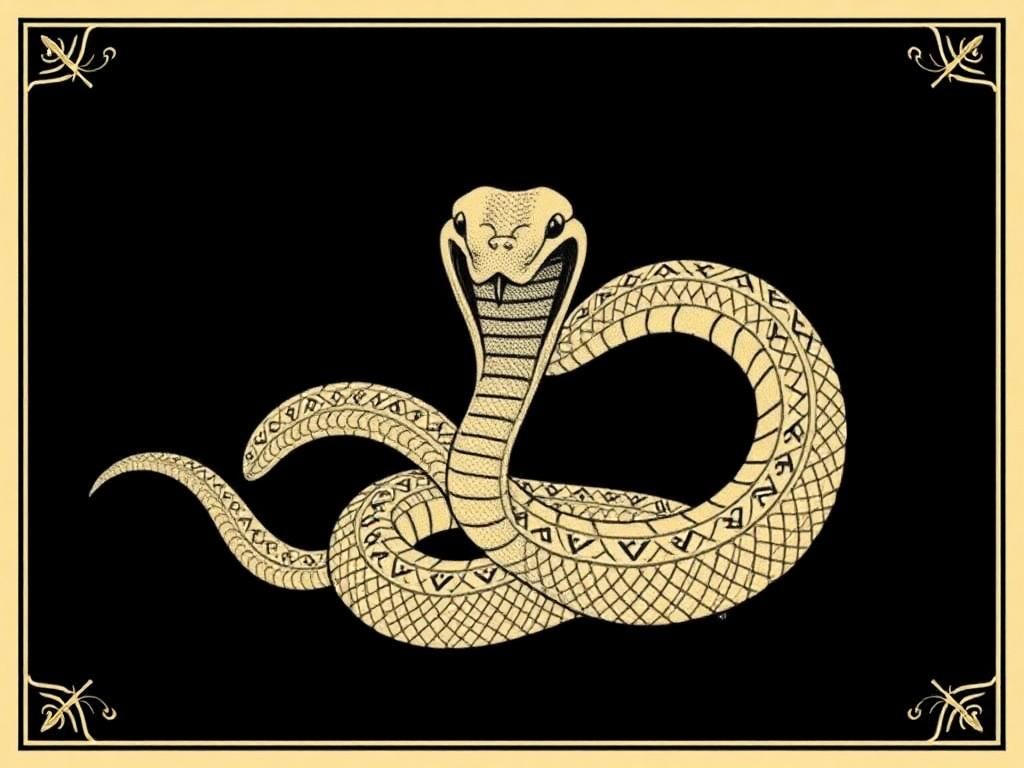The symbolic meaning of snakes holds diverse interpretations throughout human history, from ancient civilizations to contemporary cultures. In many societies, snakes have served as profound symbols representing duality, transformation, wisdom, and healing. Their significance varies widely, reflecting a spectrum of emotions and beliefs, showcasing their power as symbols of both creation and destruction.
Overview of Snake Symbolism
Significance of Snakes in Various Cultures
Across the globe, snakes feature prominently as symbols in art, literature, and religion. In some contexts, they denote protection and fertility, while in others, they embody danger and evil. This duality underscores the complex relationship humans have with these creatures, representing the intricate balance between good and evil.
Historical Context of Snake Symbolism
Ancient Civilizations
The symbolic meaning of snakes can be traced back to ancient civilizations where they played crucial roles in mythology and religion.
Egyptian Mythology: The Uraeus, often depicted as a rearing cobra, symbolized sovereignty, royalty, and divine authority. This symbol protected pharaohs in life and death, signifying the power of the state and the gods.
Greek Mythology: The Greeks revered Asclepius, the god of healing, depicted with a serpent entwined around a staff. This association highlights the snake’s role in healing and rebirth, representing holistic health and rejuvenation.
Indigenous Cultures
Indigenous beliefs further illustrate the deep-seated symbolic meaning of snakes.
Native American Beliefs: In many Native American cultures, the serpent symbolizes renewal, transformation, and fertility. The snake sheds its skin, mirroring the cycle of life and renewal.
Mesoamerican Cultures: Quetzalcoatl, the feathered serpent in Mesoamerican mythology, represents the union of earth and sky, embodying wisdom, culture, and the dawn of civilization.
Symbolic Interpretations of Snakes
Transformation and Rebirth
Within the realm of symbolism, snakes are often associated with transformation.
The act of a snake shedding its skin is a profound metaphor for personal growth and the ability to leave behind the past. This natural process reflects the cycles of life and death, embodying the hope of renewal and the promise of a fresh start.
Duality of Nature
The symbolic meaning of snakes encapsulates the duality of existence.
Snakes represent both creation and destruction, often symbolizing the balance of light and darkness. They embody the concepts of duality, where every aspect of life has the potential for harm or healing.
Wisdom and Knowledge
Throughout various traditions, snakes are associated with wisdom and knowledge.
For instance, in the Biblical context, the serpent in the Garden of Eden represents temptation but also embodies curiosity and the pursuit of knowledge. This idea reflects an inherent complexity in the symbolism of snakes, where they can signify enlightenment while simultaneously being cautionary figures.

Cultural Symbolism of Snakes
Religious Interpretations
In religion, the symbolic meaning of snakes takes on critical forms.
Christianity: In Christianity, snakes are often viewed as symbols of temptation, sin, and evil, primarily due to the narrative of Adam and Eve. This portrayal reflects deep-rooted fears and moral lessons associated with the creature.
Buddhism: Conversely, in Buddhism, the Naga symbolizes protection and guardianship over sacred teachings, often depicted in art as a snake that shelters Buddha.
Astrology and Zodiac Signs
The representation of snakes extends into astrology.
Chinese Astrology: In Chinese astrology, the snake is viewed as wise and intuitive. People born under this sign are believed to possess qualities such as insight and deep understanding.
Western Astrology: Similarly, in Western astrology, the snake symbolizes intuition, adaptability, and charm, reflecting a connection to those possessing these traits.
Snakes in Literature and Art
The symbolic meaning of snakes is prevalent in literature and art.
Iconic literary references include the portrayal of snakes in works like the classic tale of “The Jungle Book” with Kaa, representing cunning and transformation. In art, snakes are depicted in various styles across cultures, often adding layers of meaning that resonate with their rich histories.
Psychological Symbolism
Jungian Perspectives
Within the field of psychology, particularly from a Jungian perspective, snakes are seen as profound archetypes.
The snake serves as a manifestation of the Self and the Shadow, representing the unconscious and repressed aspects of humanity. Dreams featuring snakes often signal transformation, prompting individuals to confront hidden fears and desires.
Common Psychological Associations
The symbolic meaning of snakes strongly connects to fears and phobias. Many individuals experience significant anxiety when encountering snakes, often rooted in cultural narratives and personal experiences.
Conversely, snakes in dreams can carry positive connotations related to change, personal growth, and healing. They often signal that a transformation or important opportunity is on the horizon.
Contemporary Symbolism
Snakes in Modern Culture
In contemporary contexts, the symbolic meaning of snakes continues to evolve.

In fashion and branding, snakes are frequently used as symbols of power, seduction, and allure. Brands often leverage the intriguing aspects of snake symbolism to convey a sense of mystery and sophistication.
In movies and popular media, snakes often take center stage, embodying the themes of danger, seduction, or cunning intelligence.
Environmental Symbolism
The connection between the symbolic meaning of snakes and environmental health is becoming increasingly significant.
As critical components of ecosystem balance, snakes represent biodiversity. Their presence indicates a healthy environment, while conservation efforts aimed at protecting snakes highlight the importance of biodiversity for ecological stability.
Table Summary of Snake Symbolism
| Culture/Mythology | Symbolism | Key Representations |
|---|---|---|
| Egypt | Protection | Uraeus, Pharaohs |
| Greece | Healing | Asclepius |
| Native American | Renewal | Serpent Shedding Skin |
| Mesoamerican | Wisdom & Culture | Quetzalcoatl |
| Christianity | Temptation | Serpent in Eden |
| Buddhism | Protection | Naga |
FAQs
1. What is the symbolic meaning of snakes in different cultures?
The symbolic meaning of snakes varies across cultures, representing protection, healing, temptation, and wisdom.
2. Why are snakes associated with transformation?
Snakes symbolize transformation due to their ability to shed their skin, representing personal growth and renewal.
3. How do snakes appear in literature?
In literature, snakes often symbolize cunning, transformation, and temptation, appearing in stories as complex characters.
4. What do snake dreams represent in psychology?
Snake dreams can symbolize transformation, hidden fears, or personal growth, often reflecting the dreamer’s unconscious state.
5. How are snakes viewed in modern symbolism?
In modern culture, snakes symbolize power, seduction, and mystery, often featured in fashion and media.
6. How do snakes contribute to environmental health?
Snakes play a vital role in biodiversity, indicating ecosystem health and contributing to ecological balance.
7. Why do people fear snakes?
Fear of snakes often stems from cultural narratives, personal experiences, and evolutionary instincts.
8. What roles do snakes play in astrology?
In astrology, snakes symbolize intuition and adaptability, representing unique qualities linked to those born under specific signs.
9. Can snakes symbolize both good and evil?
Yes, snakes embody duality, representing the balance of good and evil, creation and destruction.
10. Are there any conservation efforts for snakes?
Conservation efforts are ongoing to protect snake populations and their habitats, emphasizing their role in preserving biodiversity.
